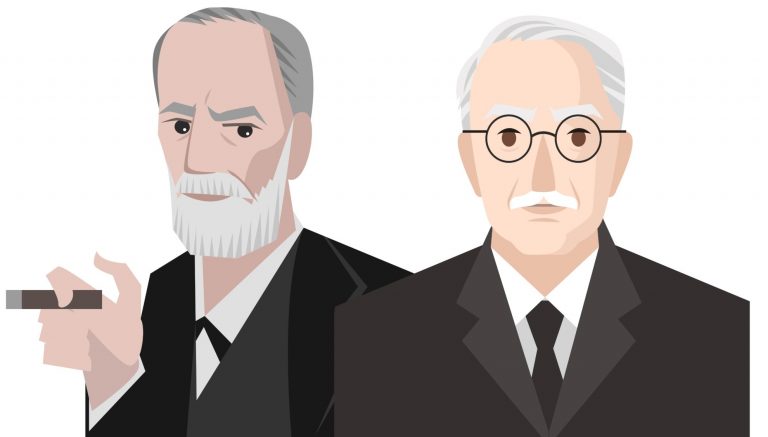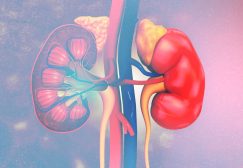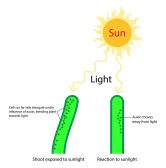Sigmund Freud and Carl Gustav Jung

An artistic depiction of the two notable psychiatrists, Sigmund Freud (left) and Carl Jung (right)
Table of Contents
Sigmund Freud
Sigmund Freud was a famous Austrian neurologist (1856 – 1939), who stated that dreams were the manifestation of the unconscious. Himself and another neurologist, Carl Gustav Jung (1875 – 1961), believed that conscious behavior derived from unconscious instinct which exists in all of us.
These unconscious thoughts were linked to suppressed sexual desires. Freud identified three key stages in the life cycle where the child’s tendency to focus on sexual areas of the body changes over time.
- In the first year of a babies’ life, they focus on the mother’s mammary gland for feeding (the breast).
- This state is succeeded from age 1 to 3 where the toddler is learning how to control their bowel and concentrates on their anal region.
- This is in turn succeeded by attention towards the reproductive organs at age 3 to 4.
Freud argued that in these stages of unconscious repression, male children are attracted to their mother and become instinctively aggressive towards the father. The father reciprocally injects fear into the child by his male superiority, thus insinuating an essence of competition and games theory. Either way, the prime fact is that the child must grow to become sexually active and mature.
Differences Between Jung and Freud
Jung believed that a persons’ brain consisted of the forgotten consciousness and a cluster of memories of past experiences. He came to this hypothesis by studying humans suffering a mental disorder, who had hallucinations that were not a past recollection, thus Jung deduced there was another component of the brain adding to this illusion, i.e. the unconscious.
Freud, on the other hand, believed that the brain was divided into three parts
- The ID – Inherited natural instincts
- The Ego – The sense of self and attitude towards the external environment
- The Superego – Superimposed values deriving from society and parental guidance
Essentially, this method of thinking, and approaching the brain from a self-realizing approach, neurology has been able to develop since these initial theories by Jung and Freud.
It also paved advances in psychiatry, and methods of psychotherapy to combat mental disorders, which are investigated upon in the next tutorial.
You will also like...

Kidneys and Regulation of Water and Inorganic Ions
The kidneys are responsible for the regulation of water and inorganic ions. Read this tutorial to learn about the differ..

Mātauranga Māori and Science
Mātauranga Māori is the living knowledge system of the indigenous people of New Zealand, including the relationships t..

Geological Periods
Geological periods is a study guide that cites the different geological periods on Earth's timeline. Each has a brief ov..

Takahē (Porphyrio hochstetteri)
Meet the colorful takahē, an extremely rare flightless bird. Find out more about its unique features and why they matte..

Birth of a Human Baby
Following nine months inside the mother's womb is the birth of the baby. Know the different stages of the birthing proce..

Plant Auxins – Phototropism & Geotropism
Plants produce hormones to regulate their growth. Auxins, for instance, influence plant growth. Know the role of auxin i..
